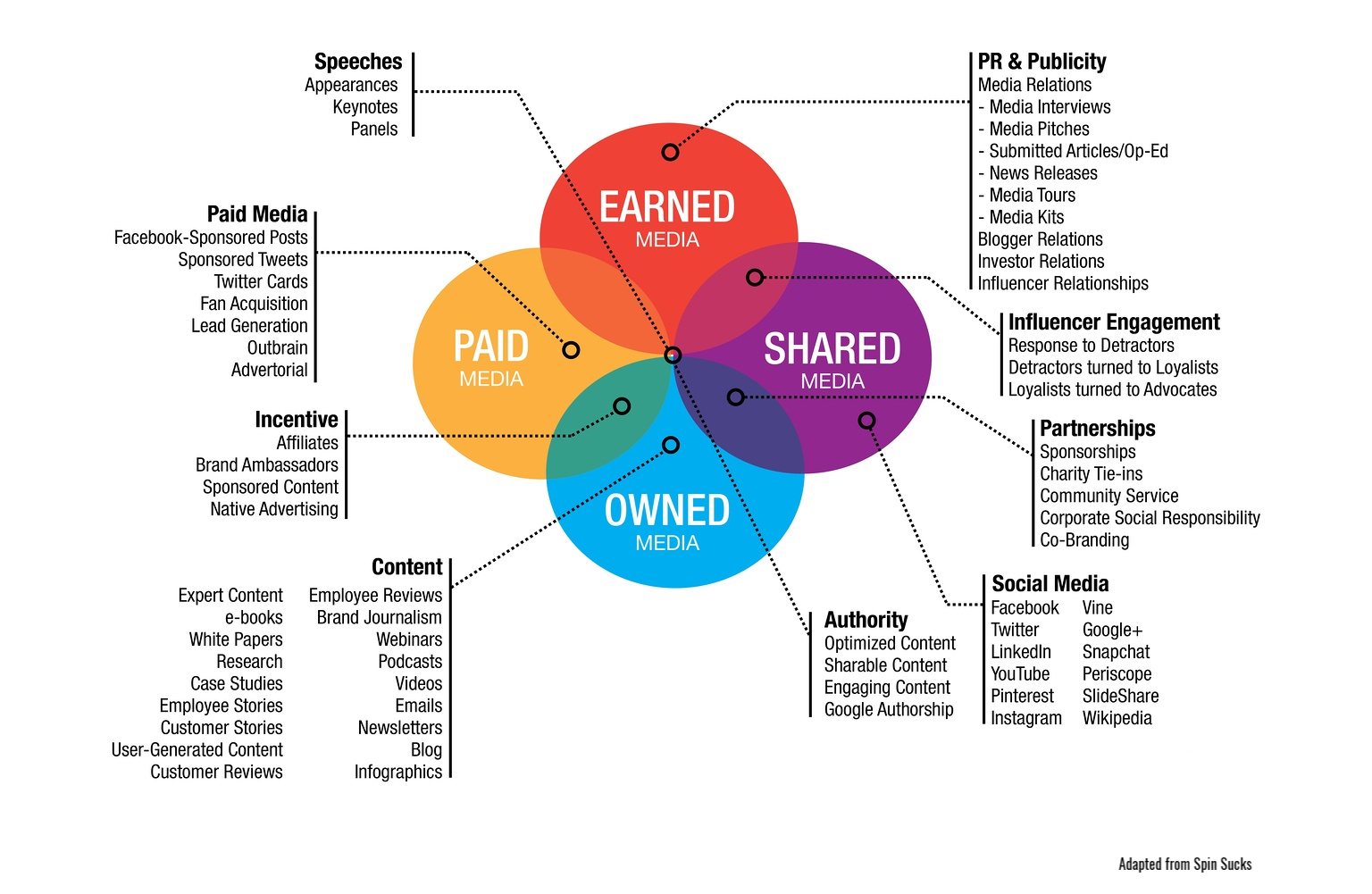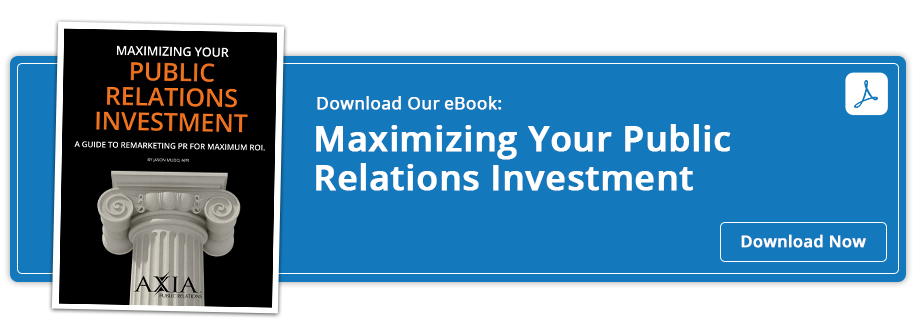If you’re not using PR to grow your business, you’ll soon be left behind
It seems like every day we are asked to embrace some new product, idea or way of doing business. Each time, we are promised that if we get on board with the new plan, we will change the world. Some things hold true, such as the microwave, the internet and social media; others, not so much. However, there is now a novel approach to handling public relations and marketing that we believe will stand the test of time.
The field of public relations is changing at lightning speed, and how we deal with these cosmic shifts will separate those who can adjust and stay relevant from those who can’t keep up and are soon trampled. An integrated concept called PESO can help your company and PR firm better understand the industry, media and how to manage it all. Read on to see why it may be right for your business.
What is PESO?
PESO stands for paid, earned, shared and owned.
Editor's Update: In May 2010, the late PR measurement expert Don Bartholomew first developed the acronym PESO for paid, earned, shared, and owned media and referred to it as a model. That’s according to PR Academy (Sept. 16, 2019) and others. PR Academy cites Bartholomew’s May 12, 2010, social media measurement story and a corresponding "The Digitization of Research and Measurement" blog post (with the same date). Then, in her June 24, 2013, Spin Sucks blog post, Gini Dietrich published a widely embraced cloverleaf Venn diagram showing how these four important PESO media roles intersect. Still, she does not refer to the diagram as the “PESO model” in this blog post’s body copy. It seems she officially launched her diagram of the PESO model in her Feb. 25, 2014 book, "Spin Sucks.”
Dietrich developed and advocates it. It represents a way to look at public relations beyond media hits and impressions and into operating as a completely incorporated part of an organization’s strategic plan that delivers concrete results.
Today, public relations can no longer operate in its own protected bubble. Practitioners must work alongside marketing, advertising, information technology and branding professionals to deliver real outcomes for a company as a whole. This means PR must acquire new skill sets and learn to use the same data metrics as other areas within the company to demonstrate value.
Looking at PR in a more comprehensive way gives a deeper awareness of how our efforts relate to the big picture. This, in turn, helps to foster a laser-sharp focus on aspects such as what kind of content works best, how customers experience it and ways to improve future campaigns.
How to make PESO work for your company
When distributing messages and increasing brand recognition, you will improve your reach by using all available types of media. Here is an example of how PESO can work in the real world, with a new product launch:
- Collect and analyze data to determine where your target audience gets information, how they want you to reach them, what they need and how to craft your messages to attract their attention.
- Use paid media to purchase advertising. Tools such as virtual ad campaigns and direct mail can further extend your impact and visibility.
- Use owned media to discuss your new product on your website and blog; get feedback and provide information on Facebook and Twitter; and create dynamic, streaming videos and visuals for other social media such as Instagram and YouTube.
- Remember, earned media – the art of getting journalists, influencers and customers talking about your product – is a key component of a new launch. Get them interested by presenting original information about how your new product will affect the lives of their target audiences, using some of the data you have already developed.
- Use social media to connect directly with the public and encourage engagement by using the content and relationships you’ve been creating and building. Make it easy to share in order to create buzz and be sure to use all platforms necessary to reach your target audience.
- Measure, analyze and adjust. Throughout the entire process, it’s crucial to know what aspects are working, how you can tweak things for more effectiveness and when to change course completely. You can do this by keeping a close eye on sales, search engine management and perceptions about your product and brand.
Why you should use a PR agency to help
PESO is a good model to follow, yet every campaign is distinct. How you implement it for a product launch is different than how you will use it for a brand awareness or social responsibility campaign.
At Axia Public Relations, we understand the connection between PR, lead generation, thought leadership, measurement and how it all ties together with your overall business goals. We will work in tandem with your entire team to achieve results. To learn more, contact us today or download our e-book, Maximizing Your Public Relations Investment.

 Lisa Goldsberry is a writer for Axia Public Relations with more than 15 years of public relations experience. She specializes in business and technology PR. Lisa has worked for Axia since December 2013. Learn more about Lisa Goldsberry. Connect with Axia on Twitter @axiapr or tell us what you think in the comments below.
Lisa Goldsberry is a writer for Axia Public Relations with more than 15 years of public relations experience. She specializes in business and technology PR. Lisa has worked for Axia since December 2013. Learn more about Lisa Goldsberry. Connect with Axia on Twitter @axiapr or tell us what you think in the comments below.
Topics: public relations, media, shared media, earned media, owned media

Comment on This Article